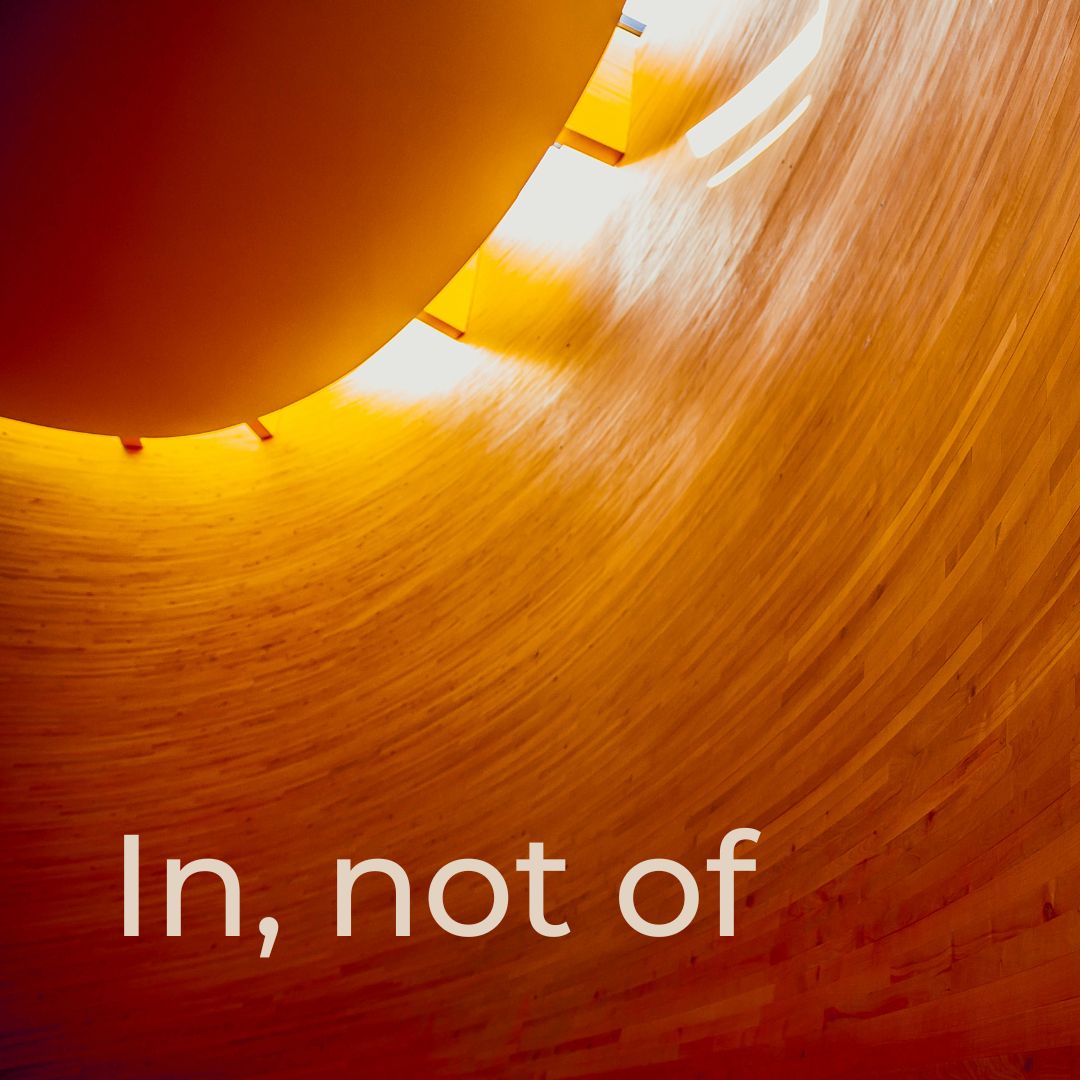
Novelist Victor Hugo wrote that architecture is a special kind of writing. If this is true, when we enter into a building constructed for religious purposes—a church, chapel, mosque, synagogue, or house of prayer—we should see or at least sense the word sanctuary somehow figuratively, expressively, written into the space it occupies.
Our word, sanctuary, is derived from the Latin word, sancire, meaning—to limit—which is to say that when we approach a sacred space, ideally we should feel ourselves traversing across a limit of sorts, a borderline, a boundary between the secular and the spiritual.
For instance, there’s a chapel in Finland that evokes this feeling with remarkable effect. A striking spruce-clad, round, funnel-shaped building, the Kamppi Chapel of Silence, stands in the midst of a bustling urban landscape in the center of Helsinki. Though it’s a Lutheran church, the chapel hosts no weekend services, but rather, serves simply as a place of repose for its visitors during the week where all are welcome regardless of background or belief.
Austere in appearance, minimalist in design, the building’s exterior is made of elegantly-contoured wooden planks. Just inside, there’s a small foyer, glass on one side, concrete on the other, that acts as a sort of liminal air-lock. Here, there’s a sense of having arrived at that borderline between the secular and what’s just ahead.
Next, moving through a door constructed of alder wood, a kind of birch, a bright but pleasant light floods the eyes, sunlight from recessed skylights set along the edge of the chapel’s ceiling. The unadorned alder walls of the oval-shaped room are milled into the same gently-curving shape as the spruce outside. An aisle down the middle, twelve pews made of ash face a simple pulpit next to a slender silver cross set atop a simple altar. There’s sanctuary here, one that encourages a quiet, earnest form of contemplation. A sense of peace overtakes you, so calming it feels almost otherworldly just as the chapel’s designers surely intended.
But there’s one more important thing that a visit to the Kamppi Chapel impresses upon a visitor, or at least it did to me. And in some ways, it’s exactly the opposite of everything I’ve described so far about the place as it’s not just otherworldly, spiritual, and sacred. There’s something else. Something more.
Upon stepping back outside into the buzzing mercantilism of the busy plaza—the chapel’s cladding almost glowing under the Finnish sky—it struck me how this structure, though designed and built for a spiritual purpose far different from what surrounds it, also adorns and inhabits the vibrant city square in which it’s located so beautifully, so organically, so magnetically. This is attested to by the fact that after opening in 2012, each year the chapel has 350,000 visitors. Usefully, confidently, the chapel belongs in this very cosmopolitan place while at the same time managing to somehow remain distinctly set apart from it. That is to say, it seems, at the same time, to be both in, but not of the world.
Arising from Jesus’ prayer for His disciples not long before He was crucified, this ‘in, but not of the world’ saying has always hit my ears accompanied by a trilling sigh: Well, here we are stuck ‘in’ an evil world. We just have to do our white-knuckle best to not become ‘of’ it; too much like it. The words seem to counsel a risk-averse tentativeness against robustly engaging in secular matters with the wider world.
And while there’s something to be said about being cautious in our troubled world, there’s also, at the same time, a problem with it—it’s not how Jesus lived His life.
Jesus certainly stood outside the prevailing culture of His era in many ways—turning over tables at the Temple comes to mind—but at the same time, He was not tentative about engaging in it. He never seemed to decline an invitation to a party, instead using every opportunity to connect with whomever was around. As a teacher, He reached unhesitatingly for specific, earth-bound examples to punch up and contextualize His brilliant parables, to make them more relatable, more real. In a hundred different ways, it seems like Jesus managed each day to simultaneously both inhabit and stand apart from the culture He was in.
I’m not completely sure how He accomplished this. But it’s worth some thought. It’s worth some study. It’s worth some quiet, earnest contemplation in a sacred space because it’s difficult. However, it can be done. I know it because I’ve seen it done. In Finland.
God—Help me to contour my life—in, but not of the world. Amen.
—Greg Funderburk





